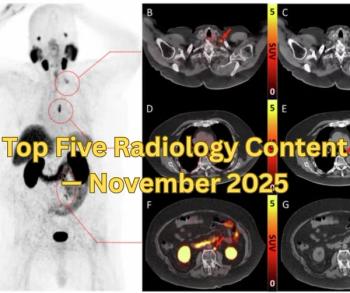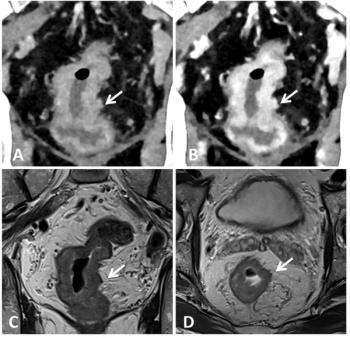
Multiparametric MRI May Miss or Underestimate Prostate Cancer Lesions
Multiparametric MRI may not show all prostate cancer lesions or may underestimate their size.
Multiparametric magnetic resonance (MP MR) imaging may miss clinically important lesions in prostate cancer, according to a study published in
Researchers from the National Institutes of Health in Bethesda, MD, performed a retrospective single-center study to characterize clinically important prostate cancers missed at MP MR imaging. The study included 100 consecutive patients who had undergone MP MR imaging and subsequent radical prostatectomy. A genitourinary pathologist blinded to MP MR findings outlined prostate cancers on whole-mount pathology slices.
The MP MR images were correlated by two readers who were blinded to histopathology results during prospective reading. Eighty clinically unimportant lesions (<5 mm; Gleason score, 3+3) were excluded from the study. The same two readers then retrospectively reviewed cancers missed at MP MR imaging and assigned a Prostate Imaging Reporting and Data System (PI-RADS) version 2 score to better understand false-negative lesion characteristics.
The results showed that of the 162 lesions found, 26 (16%) were missed and 136 (84%) were correctly identified with MP MR imaging. Eight lesions were underestimated for size.
The Gleason scores for the 26 missed lesions were:
• 3+4 in 17 (65%)
• 4+4 in 7 (27%)
• 4+5 in 1 (4%)
Retrospective PI-RADS version 2 scores were:
• PI-RADS 1, n = 8
• PI-RADS 2, n = 7
• PI-RADS 3, n = 6
• PI-RADS 4, n = 5
The MP MR imaging did depict clinically important prostate cancer in 99 of 100 patients, but at least one clinically important tumor was missed in 26 (26%) patients, and lesion size was underestimated in eight (8%).
The researchers concluded that clinically important lesions can be missed or their size can be underestimated at MP MR imaging.
Newsletter
Stay at the forefront of radiology with the Diagnostic Imaging newsletter, delivering the latest news, clinical insights, and imaging advancements for today’s radiologists.



























